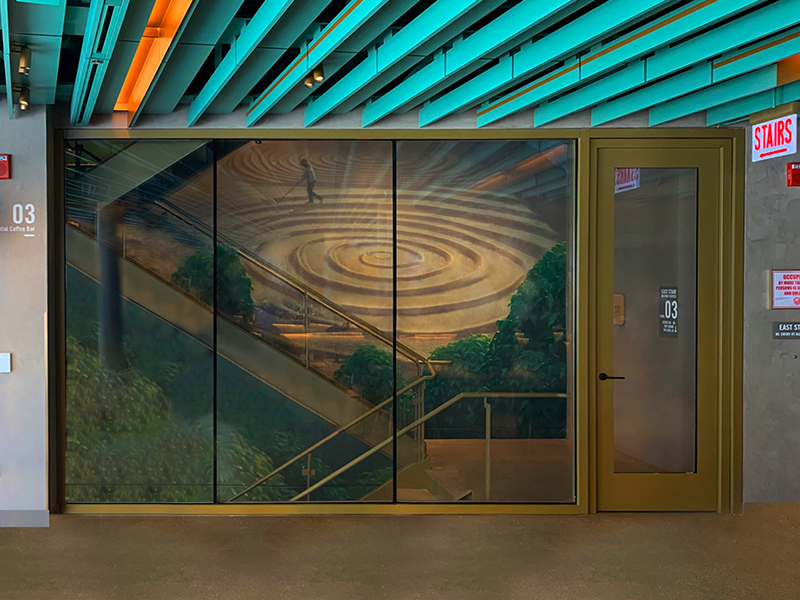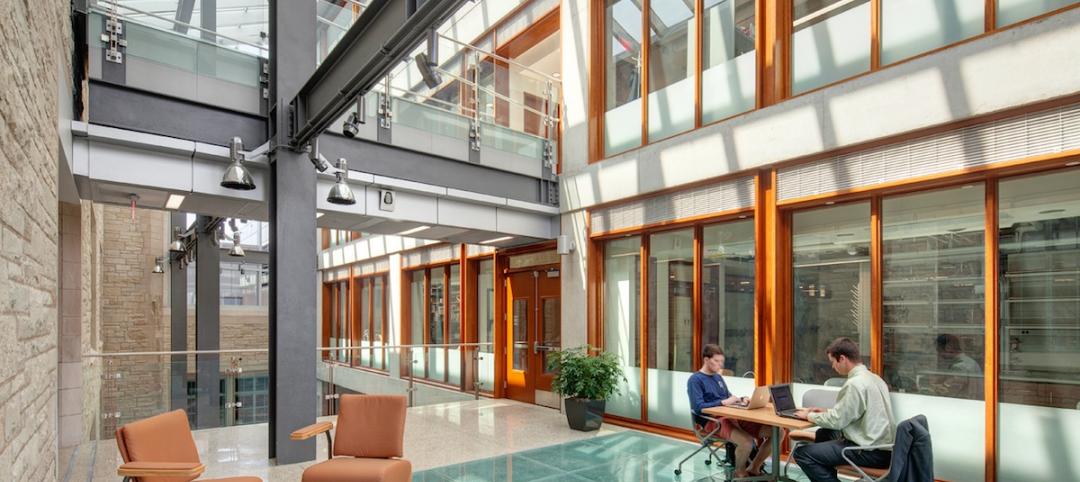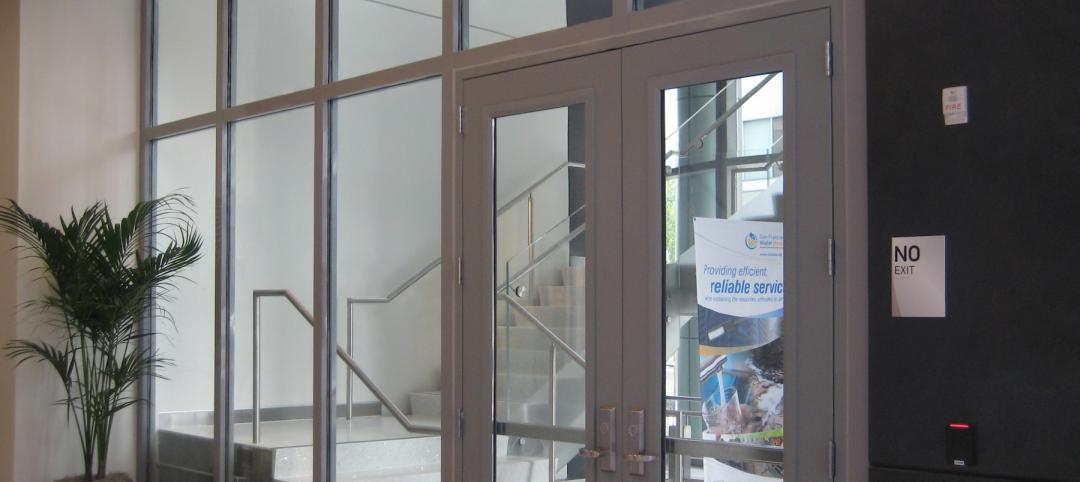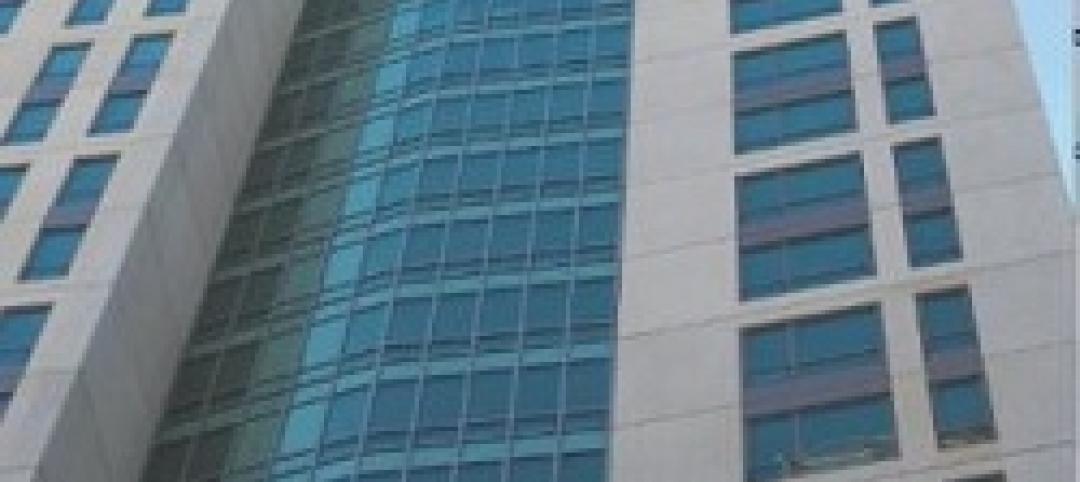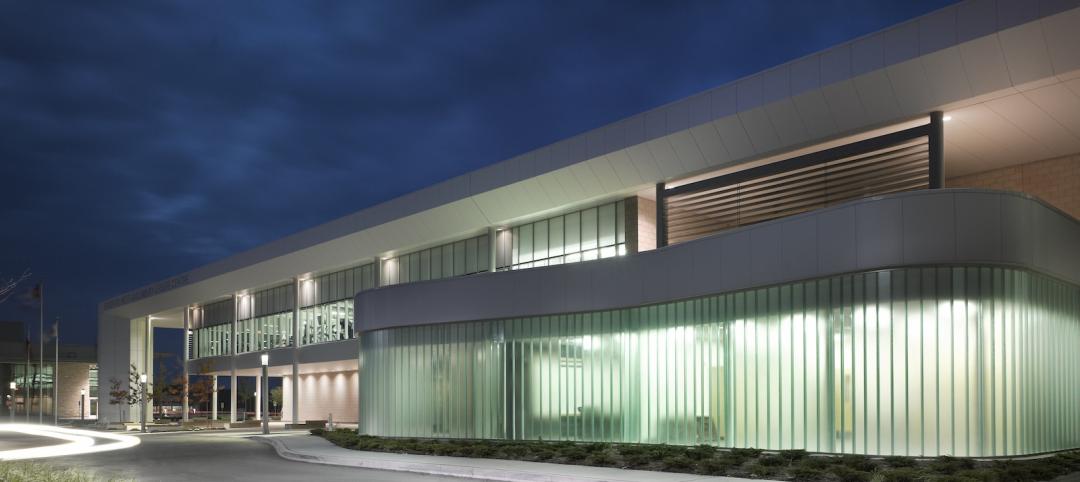The Starbucks Reserve Roastery in Chicago’s Magnificent Mile first opened in November 2019, marking it as the sixth Starbucks roastery globally and the third in the United States. Standing five stories tall, the 35,000 square foot facility is the world’s largest Starbucks. The roastery offers an immersive experience where patrons can ride spiral escalators surrounding a 56-foot cask for 360° views, catch master roasters and baristas impart their vast knowledge on the artistry and science of coffee, and ponder at an incredible, 4-story mural by Chicago artist Eulojio Ortega.
Ortega’s artwork is a progressive piece that pays homage to farmers and coffee-growing regions, exhibiting the art and life of coffee planting, selecting and processing. The mural, brilliant for conveying the story as visitors go from floor to floor, is interestingly located in an exit stairwell.
Traditionally, stairwells are enclosed in opaque walls, leaving them dark, isolated, and rarely utilized unless in an emergency. This is where the architects masterfully blended their creativity with their knowledge of advanced building material technology. To allow the mural to be visible through multiple floors, encourage stair usage and meet fire rated code requirements, the architects redesigned the 2-hour stairwell using transparent, floor-to-ceiling butt-glazed glass walls with the largest tested and listed fire resistive glass panels available.
To meet all the design and code requirements, the architects selected fire resistive, ASTM E-119 rated SuperLite II-XLB 120 by SAFTI FIRST® with Starphire Ultra-Clear glass for its superior optical clarity, large panel sizes and butt-glazing capabilities, which eliminated the need for obstructive vertical mullions for maximum transparency. With the largest individual glass panels over 10’ tall and over 4’ wide, this was easily accommodated by SuperLite II-XLB’s tested and listed size, which is the largest in the industry (133” maximum clear view height or width; 7,980 sq. in. maximum clear view area). As standard glass tends to have a slight blue-green tint from the iron induced from the glass manufacturing process, low-iron Starphire Ultra-Clear glass was used for its superior clarity, improved color neutrality and high visible light transmission – all of which are integral to highlighting the vibrance of Ortega’s artwork and transforming what would have been an ordinary stairwell into a significant element to this Starbucks’s immersive experience.
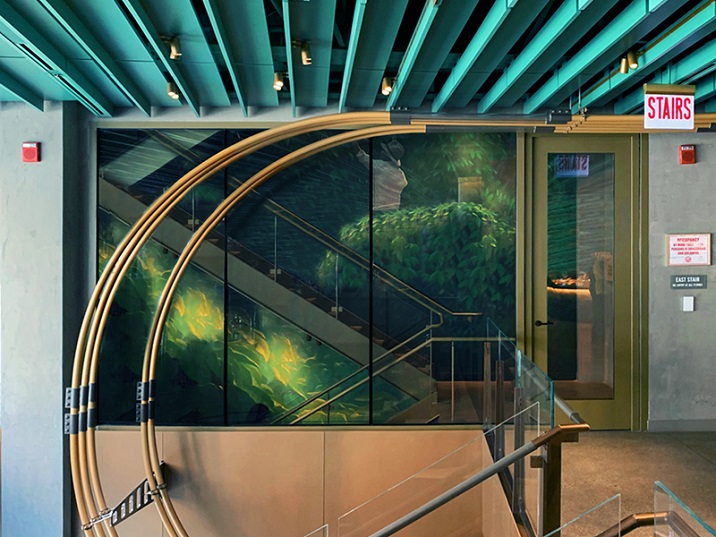
Each floor of this exit stairwell tells a story about coffee-growing, which is on full display thanks to the floor-to-ceiling expanses and butt-glazing capabilities of SuperLite II-XLB 120 with Starphire Ultra-Clear glass for superior clarity.
To ensure transparency and consistent high clarity with the accompanying entrance system, SAFTI FIRST’s GPX® Builders Series Temperature Rise Door was supplied with fire resistive, ASTM E-119 rated SuperLite II-XL 90 with Starphire Ultra-Clear glass in the door vision panel. This allowed architects to exceed the 100 sq. in. door vision panel code limitation that applies to fire protective glazing like ceramics used as vision panels in 60-90 minute temperature rise doors. The GPX Builders Series Temperature Rise Door and surrounding GPX® Architectural Series Perimeter Framing were supplied in a custom finish to blend seamlessly with Starbucks’s bronze palette.
The outcome is a clear, code-compliant stairwell that flaunts Ortega’s masterpiece and transforms ordinary stair-climbing into a truly one-of-a kind Starbucks experience.
Project Name: Starbucks Reserve Roastery in Chicago, IL
Architect: Perkins + Will
General Contractor: Pepper Construction
Glazing Contractor: SG Metal & Glass
Products: SuperLite® II-XLB 120 with Starphire Ultra-Clear® glass in GPX® Architectural Series Perimeter Framing and SuperLite II-XL® 90 with Starphire Ultra-Clear® glass in GPX® Builders Series Temperature Rise Doors
SAFTI FIRST, SuperLite and GPX are registered trademarks owned by SAFTI FIRST.
Starphire Ultra-Clear is a registered trademark owned by Vitro.
Related Stories
Sponsored | | May 3, 2014
Fire-rated glass floor system captures light in science and engineering infill
In implementing Northwestern University’s Engineering Life Sciences infill design, Flad Architects faced the challenge of ensuring adequate, balanced light given the adjacent, existing building wings. To allow for light penetration from the fifth floor to the ground floor, the design team desired a large, central atrium. One potential setback with drawing light through the atrium was meeting fire and life safety codes.
| Apr 25, 2014
Recent NFPA 80 updates clarify fire rated applications
Code confusion has led to misapplications of fire rated glass and framing, which can have dangerous and/or expensive results. Two recent NFPA 80 revisions help clarify the confusion. SPONSORED CONTENT
Sponsored | | Apr 23, 2014
Ridgewood High satisfies privacy, daylight and code requirements with fire rated glass
For a recent renovation of a stairwell and exit corridors at Ridgewood High School in Norridge, Ill., the design team specified SuperLite II-XL 60 in GPX Framing for its optical clarity, storefront-like appearance, and high STC ratings.
| Apr 8, 2014
Fire resistive curtain wall helps The Kensington meet property line requirements
The majority of fire rated glazing applications occur inside a building to allow occupants to exit the building safely or provide an area of refuge during a fire. But what happens when the threat of fire comes from the outside? This was the case for The Kensington, a mixed-use residential building in Boston.
| Apr 2, 2014
8 tips for avoiding thermal bridges in window applications
Aligning thermal breaks and applying air barriers are among the top design and installation tricks recommended by building enclosure experts.
Sponsored | | Mar 30, 2014
Ontario Leisure Centre stays ahead of the curve with channel glass
The new Bradford West Gwillimbury Leisure Centre features a 1,400-sf serpentine channel glass wall that delivers dramatic visual appeal for its residents.
| Mar 13, 2014
Austria's tallest tower shimmers with striking 'folded façade' [slideshow]
The 58-story DC Tower 1 is the first of two high-rises designed by Dominique Perrault Architecture for Vienna's skyline.
| Mar 7, 2014
Thom Mayne's high-tech Emerson College LA campus opens in Hollywood [slideshow]
The $85 million, 10-story vertical campus takes the shape of a massive, shimmering aircraft hangar, housing a sculptural, glass-and-aluminum base building.
| Feb 27, 2014
12 facts about heat-treated glass: Why stronger isn’t always better
Glass is heat-treated for two reasons: the first is to increase its strength to resist external stresses such as wind and snow loads, or thermal loads caused by the sun’s energy. The second is to temper glass so that it meets safety glazing requirements defined by applicable codes or federal standards.
| Feb 27, 2014
PPG earns DOE funding to develop dynamically responsive IR window coating Technology aims to maintain daylighting, control solar heat gain
PPG Industries’ flat glass business has received $312,000 from the U.S. Department of Energy (DOE) to develop a dynamically responsive infrared (IR) window coating that will block heat in the summer to reduce air-conditioning costs and transmit solar heat in the winter to reduce heating costs.


